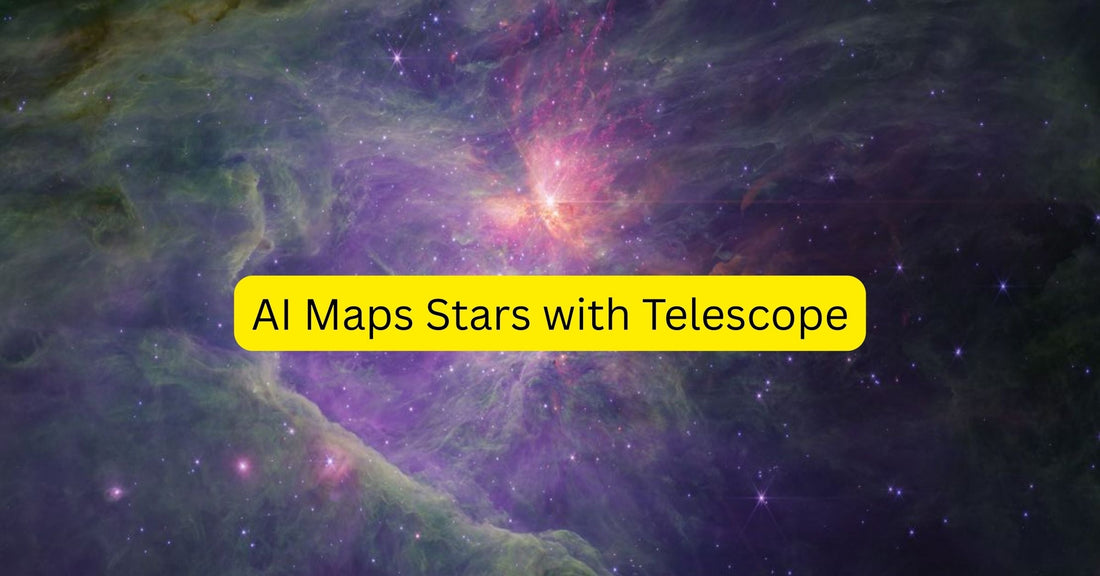AI Maps Stars with NASA's Webb Telescope Data
Kenji TanakaAI is helping NASA's James Webb Telescope map the stars by expediting data analysis and revealing new insights into the universe's earliest structures.

The James Webb Space Telescope (JWST) is revolutionizing our understanding of the universe, and artificial intelligence is playing a crucial role in processing the vast amounts of data it generates. AI models are being developed to analyze JWST images, helping scientists map the cosmos and uncover new insights into the formation of galaxies and the evolution of the universe.
This collaboration between advanced technology and space exploration promises to unlock unprecedented discoveries. The use of AI accelerates the analysis process, enabling researchers to delve deeper into the mysteries of space.
Highlights
- AI is being used to analyze images from the James Webb Space Telescope.
- The AI model, Morpheus, helps classify galaxies and map the earliest structures in the universe.
- This technology accelerates data processing, enabling faster and more comprehensive discoveries.
Read More: Xbox to be like Office: Everywhere, says Nadella
Top 5 Key Insights
• AI Expedites Data Analysis: AI algorithms significantly reduce the time required to analyze the massive datasets produced by the JWST. This allows scientists to focus on interpreting results and formulating new research questions.
• Morpheus AI Model: The Morpheus AI, developed at UC Santa Cruz, is designed to detect and classify galaxies in deep space images from the JWST. It builds upon previous work with the Hubble Space Telescope to enhance our understanding of cosmic structures.
• Mapping Early Universe Structures: The primary goal of using AI with JWST data is to map the earliest structures in the universe. This includes identifying and characterizing the first galaxies and understanding how dark matter evolved over time.
• GPU Acceleration: NVIDIA GPUs are used to accelerate the processing power of AI models like Morpheus, enabling faster analysis of complex astronomical images. This highlights the importance of advanced computing in modern astronomy.
• Future Telescope Inspiration: The James Webb Space Telescope's innovative design, including its deployable primary mirror and heat shield, is already influencing the design of future telescopes. This ensures continued advancements in space exploration technology.
Read More: Jessica Alba's Net Worth: Acting, Business & Real Estate
Expert Insights
Professor Robertson, Astronomy and Astrophysics, UC Santa Cruz: "The JWST will really enable us to see the universe in a new way that we've never seen before. So it's really exciting."
Read More: Chegg Cuts Staff, CEO Replaced Amid AI Disruption
Wrap Up
The integration of AI with the James Webb Space Telescope marks a significant step forward in our ability to explore and understand the universe. By automating and accelerating the analysis of complex data, AI empowers scientists to make groundbreaking discoveries about the cosmos.
This synergy between technology and exploration paves the way for future advancements in astronomy and our quest to unravel the universe's greatest mysteries, promising new insights into cosmic evolution. The collaboration between AI and space exploration exemplifies human innovation and our relentless pursuit of knowledge.
Read More: AI Search Engines Favor Less Popular Sources: Study
Author
Kenji Tanaka - A technology futurist and digital strategist based in Tokyo, specializing in emerging tech trends and their impact. He explains complex innovations and the future of digital skills for Enlightnr readers.
More to Explore
- Choosing a selection results in a full page refresh.
- Opens in a new window.




